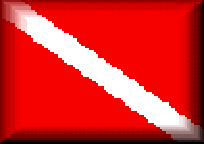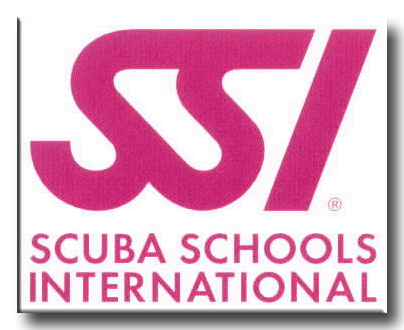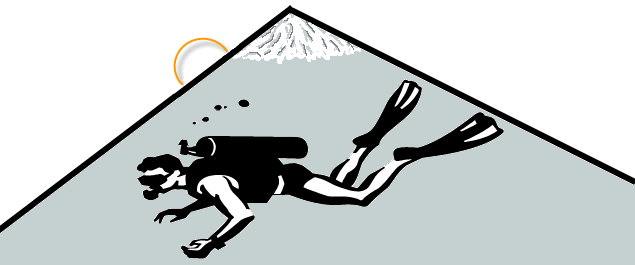
SAN SALVADOR ISLAND, BAHAMAS
"Dive experiences like no other destination in the world"
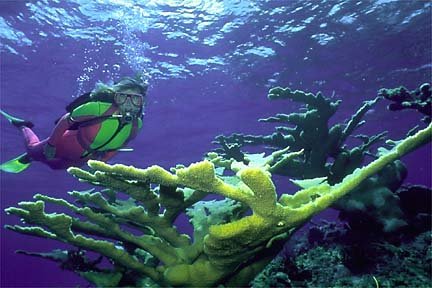
|
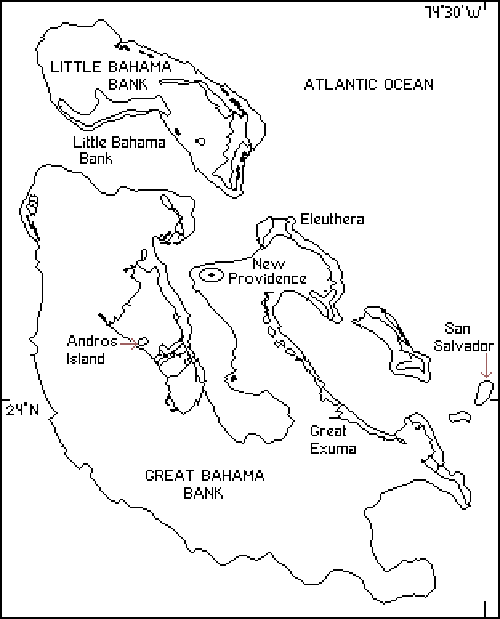
|
OVERVIEW of SAN SALVADOR ISLAND
|
Diving in San Salvador World class wall diving, frequent visits by hammerheads and striking topography, San Salvador is a must for divers visiting the Bahamas. The Bahamas means “Shallow Seas” and consists of a group of 700 breathtaking islands at the top of the Caribbean above Cuba and starting just 50 miles off the coast of Florida. This tropical archipelago has 16 main islands from which you can base yourself on to explore the rest of the area. San Salvador is originally thought to be the first land seen by Christopher Columbus, but recently it’s now thought to be another cay. Commonly called San Sal, the island has a lot of offer with amazing wall diving, shallow reefs for snorkelers, many white sandy beaches and even a fossil reef in the town of Cockburn! The Bahamas offers a huge array of different scuba diving experiences for all levels of diver, ranging from diving colourful coral reefs teeming with life, underwater caves, sunken ships, spectacular blue holes and exhilarating Shark Feeding Dives. San Salvador has published more underwater photos than any other location in the world. Its vertical walls really are world class are home to many friendly groupers and visited by sharks. There is also a wreck and many shallow reefs plentiful with fish species. Diving the Bahamas you are likely to see many different Shark species, Nurse, Black tip, Bull, Tiger, Great Hammerhead and Caribbean Reef sharks all inhibit the crystal blue waters. They can best be found near the coasts near the “Tongue of the Ocean”. Shark Feeds are a huge attraction as The Bahamas is one of the only places in the world to take part in this activity. The opportunity to watch these fascinating creatures feeding at close range will be a thrilling underwater experience that any diver will remember for a long time. Most areas will have Shark Feeding dives available and most liveaboards will do at least one in the week. A famous event of the Bahamas is “The March of the Spiny Lobster” which is a widespread Phenomenon occurring on the Great and Little Bahamas Banks near Abacos, Grand Bahama and Andros. The lobsters are usually found solitary on the reef like the groupers but again gather in huge numbers for this event. The march is usually triggered by the first autumnal storms that arrive from the north and west in late October or early November. The lobsters agitated by the storms leave their ledges and overhangs and begin to march to deeper water. Chains of lobsters can then be seen marching in single file, each lobsters vulnerable parts protected by the lobster behind. This makes them become fearless and as a diver you can get very close and they will even march over you if you lie down in their way. Climate & Sea Conditions The islands all have a warm agreeable climate which hardly varies all year round, but they are more susceptible to weather during the hurricane season which runs from June to November. Even so this doesn’t necessarily mean you shouldn’t visit at this time as with fewer tourists you can get the dive sites all to yourself. The water is very warm and settled throughout the year, and ranges from 75F in the winter months of December to March to 87F in the summer months of June to August. The dive season is year round and even in the rainy season the water is still very clear. This amazing visibility is due to virtually no runoff from the land, nearly all the rain water is absorbed into the porous limestone of the islands. Passport and/or Visa Requirements If you are traveling from the United States to the Bahamas you need either a passport, (or expired Passport up to 5 years), or an original birth certificate with raised seal, along with your photo ID. Copies of birth certificates are not accepted. Language & Currency English is our official language. Although, you might hear Bahamian English. It’s a mixture of Queen’s diction, African influence and island dialect. The “h” is often dropped, so it sounds like “ouse” for “house” or “t’anks” for “thanks.” US Dollars are equal to the Bahamian Dollar 1:1 and readily accepted throughout the Bahamas. The Casinos only use US currency. Shop keepers will take either. ATM's in the Casinos give US dollars as well as the ATM downtown near the Information Center. Most others will give Bahamian Dollars. Most shops, Tours and restaurants accept credit cards and travelers Checks. The Straw Market as well as some smaller venues will accept cash only. You can't exchange Bahamanian money in the US or UK. The only way to spend it is to go back to the Bahamas. Banking hours are Monday through Thursday, 9:30 a.m. to 3:00 p.m., and Friday from 9:30 a.m. to 4:30 p.m. In Nassau/Paradise Island there are ATMs at both Paradise Island and Cable Beach casinos, and commercial banks. In Grand Bahama, they can be found at major banks, the casino and Port Lucaya and on The Out Islands, ATMs are at banks on all of the major islands. Most are equipped with +PLUS and Cirrus ATM systems. Gratuities ALL FOOD, whether self serve or served at the table will have an automatic 15% gratuity added to the bill. There are rare exceptions to this, so check your bill carefully before paying. Gratuities are usually included. This also holds true for Atlantis Pre paid meal plans. The 15% is added to the VALUE of each meal and presented on your bill at checkout. This is not unusual in the Caribbean, but something to be aware of. Location and Size San Salvador Island is situated in the middle of the chain of small islands that make up the Bahamas. It is 5mi. wide by 13mi. long, with an area of 63 sq. miles. The population is approximately 1,200 people. Clothing Casual summer wear can be worn during the day any time of the year; but be sure to bring a jacket or sweater for cooler evenings from December to February. Most hotels/restaurants/casinos require jackets for men in the evening, especially in more cosmopolitan areas, such as Nassau and Freeport/Lucaya. Though walking the streets in swim trunks in mid-January might sound irresistible, beach clothing is inappropriate on the streets, in churches, restaurants and casinos. Away from beach or pool areas, you are expected to cover your bathing suit with shorts or a long shirt. In the more laid-back remote areas, the dress code is more flexible. |
Culture and Customs The Islands Of The Bahamas are much more than a tropical destination. For us, they’re a daily celebration of our rich culture, our diverse heritage and our way of life. It's what makes life so good here. And it's why we're proud to be Bahamians. Art/Music/Dance Self-expression. It is at the core of every Bahamian. Whether through our colorful art, lively music or soulful dancing, it is a part of each of us. And it reflects the beauty of our islands. The pride we have for our home and in each other. Music plays a big part in Bahamian culture. Throughout our islands, you’ll hear traces of African rhythms, Caribbean calypso, English folk songs and our unique Bahamian goombay traditional music, which combines African musical traditions with European colonial influences. Goombay can be traced back to slavery and is storytelling and dancing performed to a fast-tempoed “goom-bahhh” beat on a goatskin drum. African slaves had very few resources to create instruments. Rake and scrape bands had drums made out of a pork barrel and goatskin, a carpenter’s saw that was scraped with a metal file, maracas, rhythm sticks, and a bass violin made from a washtub and string. Today, rake and scrape bands use modern instruments mixed with saws and goatskin drums. Bahamian Cuisine Being an international destination, you can rest assured that you can find any type of food here. But while you’re here, give your taste buds a chance to discover Bahamian cuisine. It’s spicy and uniquely flavored. Seafood is the staple of our diet. Fresh conch scored with a knife and sprinkled with lime juice and spices is delicious. Other delicacies you’ll enjoy are land crabs and the Bahamian “rock lobster.” We also love fresh fish, especially boiled fish served with grits. Many dishes here are served with pigeon peas and rice mixed with spices, tomatoes and onions. Wash down our cuisine with a cold beverage like a Kalik or Sands (beers of The Islands Of The Bahamas), a Bahama Mama, or Goombay Smash. There’s also a Bahamian favorite that we call “Sky Juice,” coconut water blended with sweet milk and gin. And don’t forget to try Switcher, a refreshing drink made from native limes. Bush Medicine Bush medicine is using indigenous plants for medicinal purposes. It’s a tradition African slaves brought with them when they came here. There are almost 100 plants found here that can be used for medical treatment. Examples include aloe vera, crab bush, fig leaf, sailors' flowers and white sage. Junkanoo Junkanoo is uniquely Bahamian and exists nowhere else. It’s an incredibly energetic, colorful parade made up of brightly costumed Bahamians dancing and “rushin” to the music of cowbells, drums, horns and whistles. It is widely believed that Junkanoo was created by John Canoe, an African tribal chief who demanded the right to celebrate with his people even after he was brought to the West Indies as a slave. Celebrated since the 16th or 17th century, today Junkanoo has grown into an organized event with groups of up to 1,000 persons competing for cash prizes for best music, best costume, dancer, banner and best overall group presentation. Traditionally held on New Year’s Day, Boxing Day and Independence Day, parades are also held during the annual “Junkanoo Summer Festival” and the “Just Rush” competition. In addition, many hotels offer Junkanoo shows for their guests throughout the year. Religion Religion is important in the lives of the Bahamian people. Even small communities have several churches. Our religious devotion is evidence of the Eleutheran Adventurers and their Puritan influences. Straw Market Explore one of our straw markets and bring home a piece of Bahamian culture. You’ll find handmade hats, mats, baskets, woodcarvings and guava jellies. Test your bargaining skills and get a good deal on a great piece. Electricity Electricity is 110 volts, 60 cycles, same as in the U.S., so converters are not necessary. Communications The US and Canada are a direct-dial call away and most hotels provide direct-dialing service from your room or conference center. Both visitors and business travelers will find that telecommunication services on The Islands Of The Bahamas are comparable with the service found in most developed nations. A 100% digital switching system allows direct-distance dialing to more than 100 countries. The US and Canada are a direct-dial away and most hotels provide direct-dialing service from guest rooms and/or the conference centre. The Bahamas Telephone Company (BTC) provides a variety of services beyond telephony. Also provided are fax, telex, Internet, cellular, private line service, satellite and radio leasing and an improved VHF-FM radio telephone service that allows you to contact ships at sea. You can save money on long-distance calls by purchasing phone cards. These have great rates to the US and Canada and can be found at any BTC location in Nassau/Paradise Island, Grand Bahama Island or The Out Islands. For those who refuse to be unleashed from their cell phones, it is very easy to stay connected while visiting The Islands Of The Bahamas. BTC has in place roaming agreements with 128 companies worldwide. Roaming rates for the United States and Canada are $2.24 per minute and is billed through your home service provider. To access BTC’s GSM roaming system simply turn on your phone and wait while it connects to the network. To verify if your home service provider is a roaming partner with BTC or for country specific roaming rates, visit btcbahamas.com. Water Quality Technically, tap water is drinkable throughout The Bahamas. Still, we almost always opt for bottled. Resorts tend to filter and chlorinate tap water more aggressively than other establishments; elsewhere, bottled water is available at stores and supermarkets, and tastes better than that from a tap. On many of the Out Islands, rainfall is the main source of water -- so be sure to drink bottled water there. Time Zone The Islands Of The Bahamas is in the Eastern Standard Time Zone. In March of 2007, The Bahamas adopted a new policy for Daylight Saving Time. As a result, Daylight Saving Time will commence at 2:00 a.m. on the second Sunday in March and will continue until 2:00 a.m. on the first Sunday in November. This is the same daylight savings policy practiced in Australia, Canada and the United States. |

